New Funding Strategies for Smart Growth: Finding Money for Your Community Improvements
At a time when state and federal resources for municipalities are declining and demand for services and infrastructure improvements is increasing, local leaders will need to be more creative in their approaches to assembling funding.
Studies are increasingly demonstrating that smart-growth patterns are not only more environmentally sustainable, they also provide more fiscally sustainable forms of growth for cities and counties by reducing infrastructure, maintenance and service costs, and generating more tax revenue on fewer acres of land. That said, smart-growth projects still require financial investments at a time when state and federal resources for municipalities are declining, and the demand for services and infrastructure improvements and maintenance is increasing.
Local leaders will need to be more creative in their approaches to assembling funding.
This LPU focuses on a few timely funding strategies from the Local Government Commission’s new guidebook “Smart-Growth Money: New Funding Strategies for Community Improvements,” developed in partnership with Lisa Wise Consulting and funding from The California Endowment.
Comprehensive New Strategy: Enhanced Infrastructure Financing Districts
Created by legislation passed in 2014, Enhanced Infrastructure Financing Districts (EIFDs) offer local governments a broad set of new financing authorities to build infrastructure needed to support livable, sustainable communities helping to replace some of the billions of dollars that cities lost when redevelopment agencies were dissolved in 2012.
EIFDs provide communities with a full complement of financing tools needed to pay for local infrastructure projects and meet regional sustainability goals.
To create a district, a city or county – or a group of cities, counties or other local agencies – must first identify what it is trying to accomplish. This could be a specific project aimed at upgrading sidewalks and streets, while modifying runoff systems to capture stormwater, reduce pollutants, and improve urban vegetation. Or it might be part of a broader effort to reduce traffic congestion and greenhouse gas emissions through mixed-use development around a new transit station.
Once a goal is identified, a district line is drawn around the area targeted for economic development – which can be as small as a few city blocks or as large as a watershed. The city or county can then invite other local governments and districts to join in the project, with multiple local governments working together across jurisdictional lines.
Together, these local entities can create a public financing authority to develop the projects’ details and identify specific sources of revenue from each participating local government. Participating entities are critical to an EIFD’s success as they must voluntarily agree to allocate their tax increment to the EIFD.
Enhanced Infrastructure Finance Districts can finance a broad range of projects, including:
- Sustainable Communities Strategy projects, including Transit Priority Projects.
- Affordable housing within mixed-income housing developments.
- Water projects, including stormwater capture, groundwater recharge, and river restoration.
- Transportation facilities, including highways, parking and transit facilities.
- Renewable energy projects.
- Community parks, recreation facilities and open spaces.
- Brownfield restoration and other environmental mitigation.
Strengths of an EIFD: They can fund large projects, and those projects create a multiplier effect for future tax revenues. Also, no public vote is required to initially form an EIFD. The distribution of property-tax revenue by each county to schools, cities and special districts varies and should be evaluated when considering an EIFD (see table which shows the allocation of property-tax revenue throughout California by county).
Limitations: An EIFD reserve will most likely be required prior to bond issuance. Tax-increment increases over time as the assessed value of property in the district increases, so the ability to issue a bond and repay debt service in the short term may be limited. The process of forming an EIFD can be lengthy and costly.
Learn more about creating an EIFD:
- California Economic Summit, “A How-To Guide for Using New EIFDs“
- League of California Cities, Analysis of SB 628
Revitalizing Infrastructure: West Sacramento Bridge District IFD
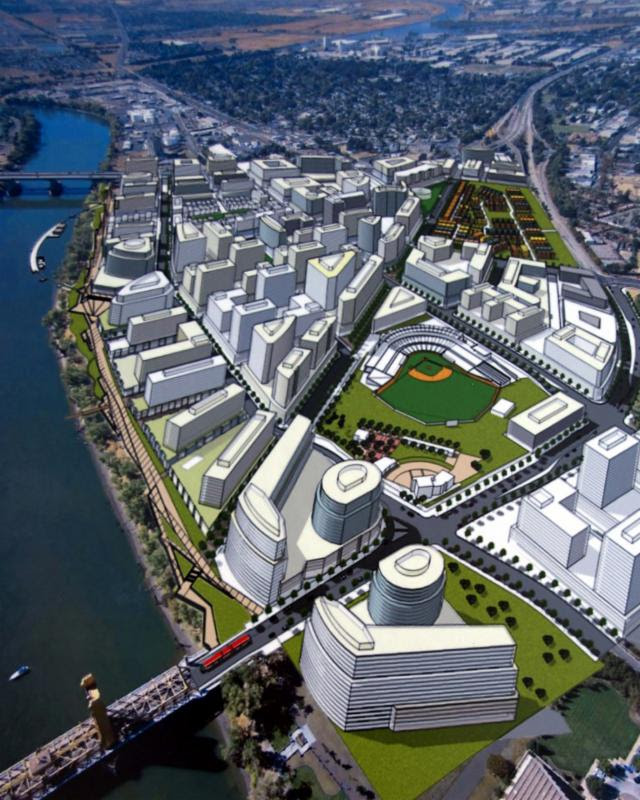
After the dissolution of redevelopment agencies and prior to EIFD legislation, the City of West Sacramento established an IFD for the Bridge District, which was undergoing a revitalization effort originally intended to be funded through the redevelopment agency.
In contrast to EIFDs, an IFD requires voter approval to be formed, requires a two-thirds vote for issuing bonds, has a 30-year term (EIFDs have a 45-year term after bond issuance), and can finance fewer types of facilities.
The redevelopment of the Bridge District includes rail removal, demolition, new roads, streetscape improvements, utilities, and a water storage tank at a cost of over $60 million.
The Bridge District IFD took about eight months to form, and its startup costs were approximately $100,000. A Community Facilities District (CFD) was formed concurrently with the IFD to provide funding for maintenance of the infrastructure improvements.
Due to the success of the Bridge District IFD, the City is now in the process of analyzing and forming a community-wide EIFD.
A River Runs Definitely through It: The Los Angeles River Project
The Los Angeles River Revitalization Master Plan identifies an estimated $1 billion worth of river projects, such as widening bridges, restoring wetlands, cleaning up industrial waste, and acquiring privately held parcels.
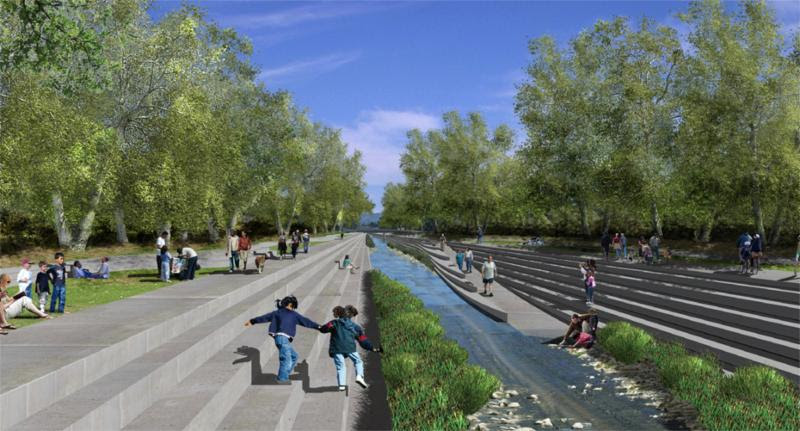
The City is discussing the use of an EIFD to fund these and other projects, including workforce housing, along the LA River, and may consider forming multiple, smaller EIFDs as pilot districts. This approach was emphasized by the Los Angeles Business Council Institute in its report on “LA’s Next Frontier: Capturing Opportunities for New Housing, Economic Growth, and Sustainable Development in LA River Communities.”
Another Tax-Increment Financing Mechanism Now Available
In addition to EIFDs, “Community Revitalization Investment Authorities” (CRIAs) have been recently enabled to fund certain projects through bonds issued by the use of tax-increment financing. CRIA are allowed by Assembly Bill 2, which was signed into law in September 2015. AB 2 allows specified disadvantaged areas of California to create a CRIA, which would use property taxes and other available funding to improve infrastructure, expand job opportunities, reduce crime, clean up hazardous waste sites, and promote affordable housing.
While there are similarities between CRIAs and EIFDs (both use tax-increment financing), different state provisions enable and regulate CRIA and EIFDs. For example, CRIAs may only carry out projects in areas where the annual median income is less than 80% of statewide annual median income, and are required to set aside 25% of all allocated taxes for low- and moderate-income housing. EIFDs are not subject to such requirements.
Crowdfunding
There are also exciting new funding strategies that offer short-term solutions for long-term success that are easier, cheaper approaches that can help phase a community into longer more resource-intensive strategies like EIFD, such as crowdunding and tactical urbanism.
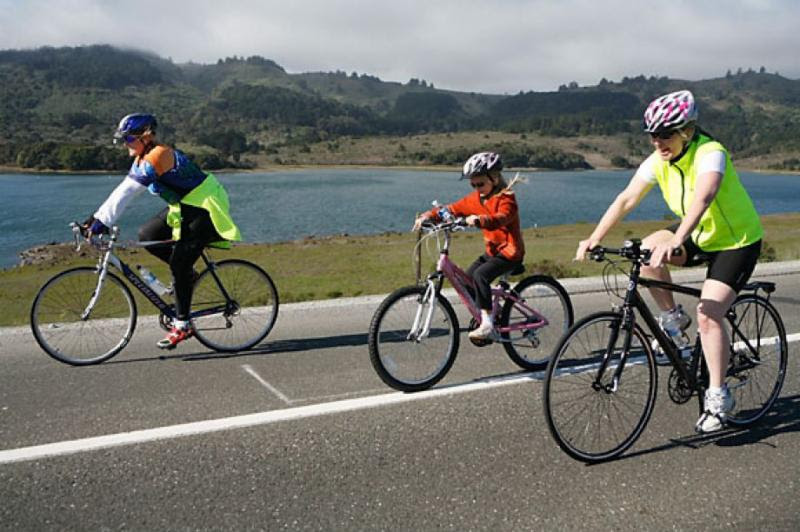
Crowdfunding is a means to collect monetary contributions from a large number of people or sources through an online platform to fund a project or venture. Civic crowdfunding is very flexible in the projects that can be funded. Such projects might include bike racks, community gardens, dog parks, playgrounds, renovation projects, neighborhood markets, cultural facilities, parks and recreation facilities, social services and conservation-easement purchases.
While usually geared toward raising relatively small sums, crowdfunding platforms can help generate big bucks. Crowdfunding can also provide gap funding to allow partially funded projects to break ground or be completed. These funds can then be used to leverage dollars for the project from other sources.
Civic Crowdfunding for “Public Spaces Community Places”
In 2014, the Michigan Economic Development Corporation launched a crowdfunding and matching initiative called “Public Spaces Community Places” that enables the public to participate in developing community projects through small investments.
Local communities and nonprofits apply to the program. Upon approval, Patronicity provides the online platform to support the crowdfunding campaign. If the campaign is successful, MEDC matches the funds raised and implementation can soon follow.
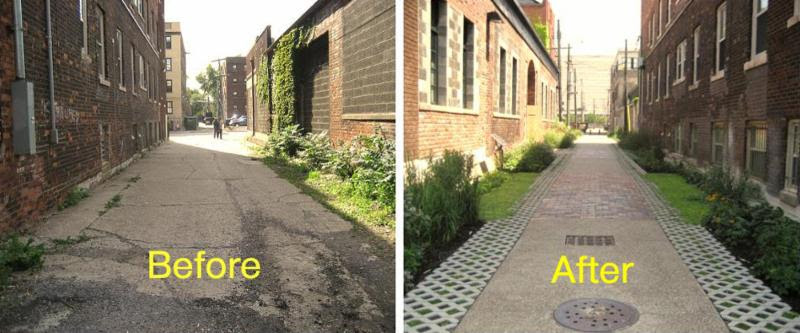
In Detroit, the Green Alley Project was selected as a “Public Spaces Community Places” pilot project. The nonprofit Midtown Detroit, Inc., raised more than $50,000 through the crowdfunding site to renovate an alley with green-infrastructure upgrades and improved walkability for local residents and businesses.
Gathering Funds for Car-free Sundays in San Mateo County
San Mateo County started Bicycle Sunday, which for nearly two decades has given more than 60,000 people annually a unique opportunity to enjoy a safe, scenic bike ride or quiet walk during the weekly closures of Cañada Road between Filoli Gardens and Highway 92.
With the program threatened by tighter local park budgets, local supporters turned to Citizinvestor. Their successful crowdfunding raised more than $10,000 to fund three months of Bicycle Sundays, covering event-related supplies and the cost to set up and maintain a safe road closure and provide first responders to medical calls for Bicycle Sunday.
Crowdfunding offers numerous benefits, including locally sourced solutions; short-term, low-cost, flexible commitment; development of social capital between residents; organizational capacity-building.
Examples of civic-specific crowdfunding platforms include Ioby and Citizinvestor. A platform like Neighbor.ly facilitates individual investment in municipal bonds. Larger crowdfunding sites, such as Gofundme, Kickstarter and Indiegogo, also have “community” or “civic” categories for projects.
Tactical Urbanism: Low-Cost Ways to Demonstrate that Smart Growth Works
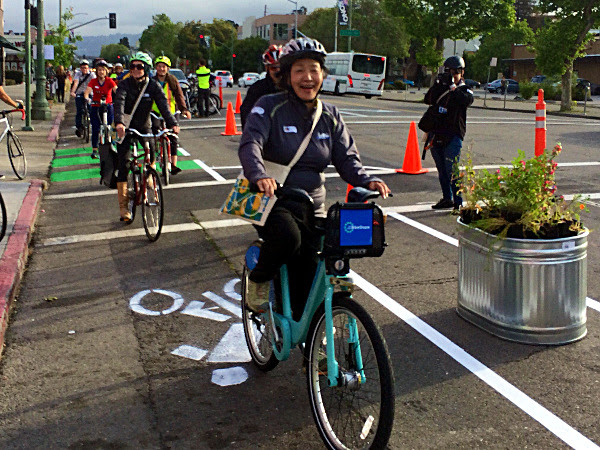
Community-led demonstration projects enable residents and stakeholders to participate in relatively inexpensive temporary transformations to test and experience changes. Sometimes referred to as “tactical urbanism,” “placemaking” or simply “pilot projects,” there is a growing number of examples across the nation. Sample projects include:
- Converting street edges into enhanced bikeways.
- Turning on-street parking spaces into parklets.
- Adding chairs and other street furniture on sidewalks.
- Converting vacant lots into community gardens and play lots.
- Converting off-street parking areas into small plazas or food-vendor courtyards.
- Improving blank walls and empty spaces with public art and colorful murals.
Changes are often installed with locally donated or recycled materials, supplies and volunteer labor. Ideas are tested with chalk, temporary paint, movable planters and homemade chairs and benches. Temporary projects can have a significant impact and help both the community and local officials envision a new future for a place – and attract funding for permanent improvements.
Tactical-urbanist projects by nature are inexpensive and sometimes free, relying on volunteer labor and donated, recycled and crowdsourced materials.
For example, materials for a weeklong complete and green street transformation of Rockwell Avenue in downtown Cleveland in 2012 that included a cycle track, bus shelter, Bi-Fi benches (a combination of biofiltration and Wi-Fi), public art, wayfinding signage and other pop-up installations with promotion and entertainment cost about $13,200.

Portable food cart trailers in a converted used-car parking lot in Portland cost $20,000 a piece. In Long Beach, conversion of on-street parking spaces with 30×7-foot streetdeck created 22 new restaurant dining spaces at the cost of $25,000 for design, construction and furniture.
Vacant warehouse shells and cargo containers can sometimes be adapted and reused as small vendor spaces at low cost. Donated, used wooden pallets can be reconstructed into sturdy benches.
For more steps on how to use tactical-urbanist practices in your community:
- The Street Plans Collaborative’s “Tactical Urbanism 2” provides an overview of tactical urbanism and examples of types of projects and places where they’re being used. Also Tactical Urbanism
- Project for Public Spaces
For additional information about these funding strategies and more, download the LGC’s full guidebook “Smart-Growth Money: New Funding Strategies for Community Improvements.“
Local Government Commission Newsletters
Livable Places Update
CURRENTS Newsletter
CivicSpark™ Newsletter
LGC Newsletters
Keep up to date with LGC’s newsletters!
Livable Places Update – April
April’s article: Microtransit: Right-Sizing Transportation to Improve Community Mobility
Currents: Spring 2019
Currents provides readers with current information on energy issues affecting local governments in California.
CivicSpark Newsletter – March
This monthly CivicSpark newsletter features updates on CivicSpark projects and highlights.



